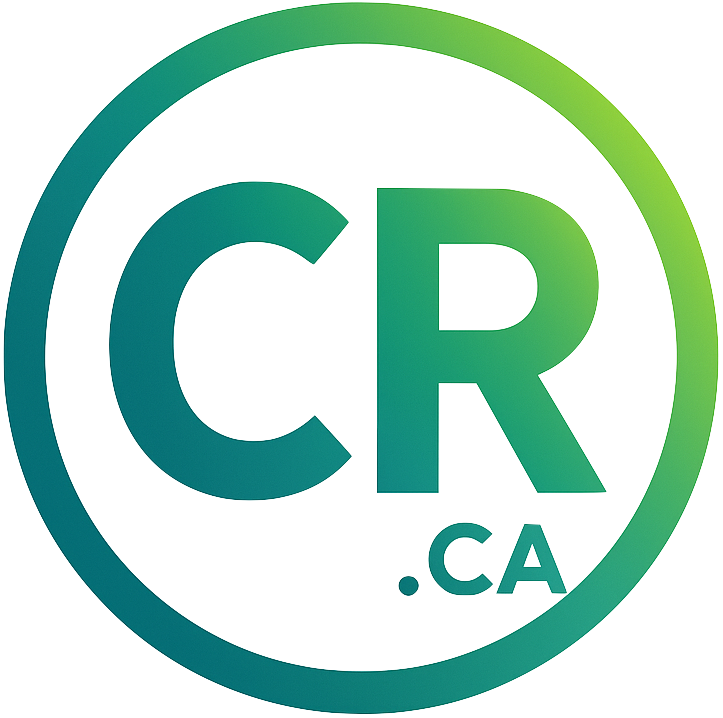Same car,
better deal.
The Canada Carbon Rebate Explained (By Province)
If you’ve ever wondered why you’re seeing “Canada Carbon Rebate” (formerly known as the Climate Action Incentive Payment, or CAIP) show up in your bank account, you’re not alone. This quarterly payment is meant to offset the federal carbon tax you’re already paying—but how much you get depends entirely on your province and the size of your household.
Below we break down how the federal carbon tax works, what the rebate is, and how much you can expect based on where you live in Canada.
How Canada’s Carbon Tax Works
Canada’s federal carbon tax was introduced under the Greenhouse Gas Pollution Pricing Act, which came into effect in 2019. The idea was simple: put a price on pollution and give Canadians the incentive to cut emissions.
The tax started at $20 per tonne of carbon in 2019 and has steadily increased—reaching $50 per tonne in 2022—with a plan to hit $170 per tonne by 2030. The system only applies in provinces and territories that don’t already have their own comparable carbon-pricing programs.
The government calls the program “revenue neutral” because most of the money collected is returned to residents through rebates instead of going into general federal coffers.
What is the Canada Carbon Rebate?
If your province doesn’t have its own carbon tax system, the federal government collects the tax and then returns it to households through the Canada Carbon Rebate (CCR). This program used to be called the Climate Action Incentive Payment (CAIP).
The rebate is tax-free, paid quarterly (January, April, July, and October), and can be received either by direct deposit or cheque. Filing your taxes—even if you have little or no income—is required to get it.
Who Qualifies?
Currently, residents of Alberta, Saskatchewan, Manitoba, Ontario, New Brunswick, Nova Scotia, Prince Edward Island, and Newfoundland & Labrador are covered by the federal rebate.
Residents of British Columbia, Quebec, the Northwest Territories, Nunavut, and Yukon aren’t included because those jurisdictions have their own carbon-pricing or cap-and-trade programs.
How Rebates Are Calculated
The amount you receive is based on your household:
- The base payment for an individual
- Additional amounts for a spouse or common-law partner
- Additional amounts for each child under 19 (with a higher base for the first child in a single-parent household)
Households in rural or small communities receive an extra supplement—originally 10%, increasing to 20% in the 2024–25 benefit year—to reflect their higher fuel needs.
You claim the rural supplement by completing Schedule 14 on your tax return and indicating you live outside a Census Metropolitan Area.
Canada Carbon Rebate by Province
Here’s a snapshot of current quarterly payments (2024–25 benefit year):
Alberta
- Base: $225 (individual), $112.50 (spouse), $56.25 (child), $112.50 (first child in single-parent household)
- Rural supplement: $45 (individual), $22.50 (spouse), $11.25 (child)
Saskatchewan
- Base: $188 (individual), $94 (spouse), $47 (child)
- Rural supplement: $37.60 (individual), $18.80 (spouse), $9.40 (child)
Manitoba
- Base: $150 (individual), $75 (spouse), $37.50 (child)
- Rural supplement: $30 (individual), $15 (spouse), $7.50 (child)
Ontario
- Base: $140 (individual), $70 (spouse), $35 (child)
- Rural supplement: $28 (individual), $14 (spouse), $7 (child)
New Brunswick
- Base: $95 (individual), $47.50 (spouse), $23.75 (child)
- Rural supplement: $19 (individual), $9.50 (spouse), $4.75 (child)
Prince Edward Island
- Base: $110 (individual), $55 (spouse), $27.50 (child)
- Rural supplement included in base
Newfoundland & Labrador
- Base: $149 (individual), $74.50 (spouse), $37.25 (child)
- Rural supplement: $29.80 (individual), $14.90 (spouse), $7.45 (child)
Nova Scotia
- Base: $103 (individual), $51.50 (spouse), $25.75 (child)
- Rural supplement: $20.60 (individual), $10.30 (spouse), $5.15 (child)
What About BC, Quebec & the Territories?
- British Columbia has its own Climate Action Tax Credit, introduced back in 2008. The maximum annual benefit is currently $504 for individuals (income-tested).
- Quebec operates a cap-and-trade system linked to California’s carbon market. No federal rebate applies.
- Northwest Territories charges its own carbon tax but offers generous offsets, including a full rebate on home heating fuel.
- Yukon and Nunavut participate in the federal program differently, with Yukon distributing the revenue and Nunavut subsidizing part of the levy.
When Do Payments Arrive?
The Canada Carbon Rebate is deposited on the 15th of January, April, July, and October. Direct deposits appear as “Canada Carbon Rebate” or “Canada Fed” on bank statements. If you’re not enrolled in direct deposit, you’ll receive a cheque.
Underpayments, Tax Debts & Shared Custody
If you’ve filed late or made an error on Schedule 14, you may receive less than you’re entitled to. In many cases, the CRA corrects underpayments automatically.
If you owe tax debt, the CRA may apply your rebate to your outstanding balance before sending you the remainder. Only one person per household can receive the payment, but shared-custody parents each receive 50% of the child portion.
Why It Matters
The federal carbon tax adds about 17 cents per litre of gasoline at the pump. For some households, that’s hundreds of dollars a year. But the average rebate in many provinces is higher than the average cost, meaning most families come out ahead—especially larger households and those in rural areas.
If you’re thinking about switching to a more fuel-efficient or electric vehicle to cut costs further, this rebate can help ease the transition.
Bottom line: The Canada Carbon Rebate exists to cushion the financial impact of the federal carbon tax and reward Canadians for doing their part to reduce emissions. Where you live and how many people are in your household will determine exactly how much you receive.
Refinancing a car in Canada is
easy. 💪
Refinance your car loan to get a lower interest rate and lower payment.
There's no obligation.

